Guide to Gem Cutting by Donald Clark, CSM IMG
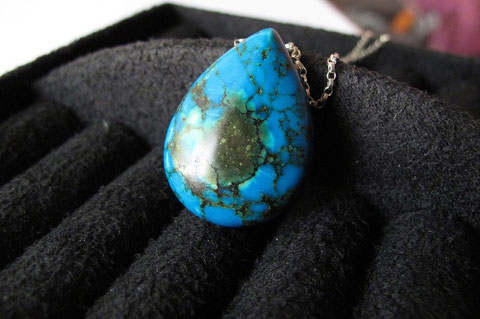 “Big Teardrop Turquoise Necklace” by Amelia Prayoga
“Big Teardrop Turquoise Necklace” by Amelia Prayoga is licensed under CC By-ND 2.0
Tumbling, cabbing, faceting, and carving are the principal fields of lapidary art. This introduction will get you familiar with these techniques and basic gem cutting terminology.
Lapidary is the art of working in stone. However, the word is usually used only in reference to working with small gem materials, not large objects like Michelangelo’s statues. There are four basic styles of gem cutting: tumbling, cabbing, faceting, and carving. (There are also a number of ways of assembling gem materials to make jewelry, ornamental objects, and mosaic-like patterns. You can learn about these techniques from this article on assembled gemstones). This guide will cover gem cutting terms from the four basic fields. You can learn more about these techniques in the Fundamentals of Lapidary series.
Tumbling
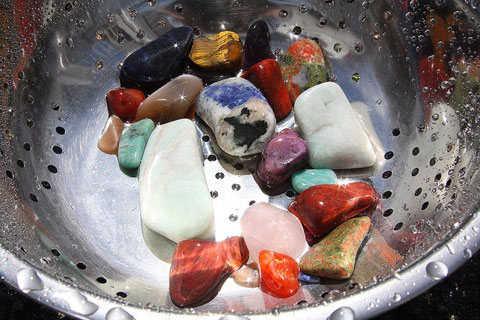 “Tumbling Rocks” by steviep187 is licensed under CC By-ND 2.0
“Tumbling Rocks” by steviep187 is licensed under CC By-ND 2.0
The simplest form of gem cutting is tumbling. Rough gem material is put in a tumbler, a revolving barrel with abrasives. Progressively finer abrasives are used until the gem obtains a polish. This process closely resembles what happens to rocks in a stream or on the beach. However, polish levels are much higher. Tumbling is ideal for children and a great family pastime. (It’s a great way to work stones collected on family vacations or rock hunting). It’s easy and requires minimal equipment. Plus, the results are sensational! You can also purchase inexpensive settings and turn tumbled stones into jewelry pieces. They make wonderful homemade gifts.
Cabbing
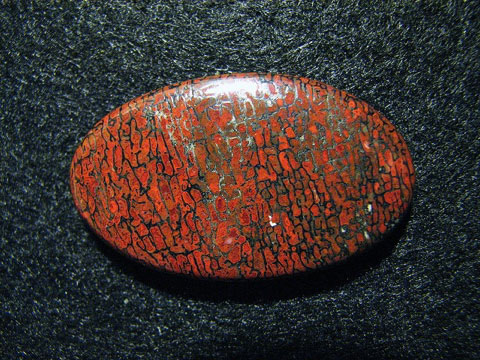 “Pyrite Dinosaur Bone Cab,” orange-red gembone with pyrite,
“Pyrite Dinosaur Bone Cab,” orange-red gembone with pyrite, by Jessa and Mark Anderson is licensed under CC By 2.0
Cabbing or cabochon cutting is probably the most common form of gem cutting. Cabochons or “cabs” are gems that are cut with a flat bottom and a curved or domed top. If you’ve seen opal or turquoise jewelry, you’ve probably seen cabs. Cutting cabs can be profitable. Depending on the material they’re cut from, cabochons can have significant resale value. This can make cabbing a very rewarding hobby, especially if you’re cutting materials you’ve found yourself. Cabbing is more complex than tumbling, and a cabbing machine is a bit more expensive, but you can become proficient with a little practice. A word of warning: cabochon cutting can be highly addictive! “Gembones” are dinosaur bones that have fossilized into minerals such as chalcedony and opal. Some of these unusual pieces are suitable for gem cutting such as cabbing.
Faceting
 “Diamond_samples-008” by Seth Lemmons
“Diamond_samples-008” by Seth Lemmons is licensed under CC By 2.0
Faceting is the cutting style with the greatest profit potential. If you can imagine a diamond in a typical engagement ring, you’re likely visualizing a faceted gem. The surface of that diamond is covered with several geometrically arranged, flat surfaces. Each of these flat surfaces is called a facet. (Some questions, like gems, can also be “multifaceted”). The purpose of faceting is to bring out the brilliance of a gem. Light entering the stone is reflected off the bottom facets and returned to the viewer. Brilliance shouldn’t be confused with dispersion or fire, which is the multicolored flashes you see coming out of diamonds and some other gems.
Gems are faceted by faceters on faceting machines. There are many kinds of faceting machines. If you want to facet gems for fun or profit, prepare to make a significant investment in equipment. When faceting, more so than the other gem cutting styles, your equipment quality will affect both your results and your enjoyment.
There are also many kinds of faceters. Faceting is an art, but you don’t need some esoteric “artistic sense” to be good at it. Machinists, engineers, and those with a knack for math often excel at faceting. Many faceters are semi-professionals. They sell enough gems to support their hobby or supplement their income. For those interested in collecting or investing in gems, this is by far the most practical gem cutting style to learn. The price of rough and labor is almost always less than the wholesale price of the finished gem.
Although you can become good at faceting with a minimum of experience, you’ll never run out of new challenges.
Carving
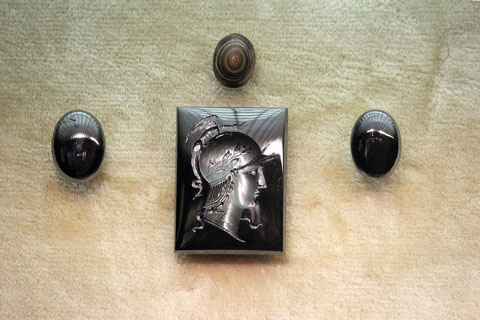 “Intaglio of a Roman Soldier in Hematite,”
“Intaglio of a Roman Soldier in Hematite,” with hematite cabochons, by greyloch
is licensed under CC By-SA 2.0
Carving is the most challenging of the lapidary arts. There are very few recognized experts in the field. To succeed at gem carving, you do need a distinctive artistic sense and a thorough understanding of the principles of lapidary. More so than wood or metal, working with gem material presents definite limits to what can be done. There are several types of carving. One of the best known forms is cameo. These are usually cut from sea shells or agates but can be carved from almost any material. Cabochons are often carved. If the design is cut into the top of a cab, it’s called an intaglio or relief carving. If the design is carved on the back, it’s a reverse intaglio. Some carvings are not designed to be used in jewelry. They are cut simply for their beauty. These are classed as stand alone carvings.
Carving is perhaps the most difficult gem cutting technique. Cameos and intaglios have been carved since ancient times and highly prized in many cultures and time periods.
Gem Cutting Nomenclature: Facets
- Crown
- For both cabs and faceted gems, the top is called the crown.
- Girdle
- The widest part of the gem, the part that defines its outline, is called the girdle. Viewed from the side, the girdle is usually fairly thin.
- Pavilion
- The bottom of a faceted gem is called the pavilion.
- Mains
- The largest facets are called mains. There are both pavilion mains and crown mains.
- Table Facet
- The large, horizontal facet on the top, the one that acts as a window into the interior of the gem, is called the table facet.
- Break Facets
- Adjoining the girdle are the break facets. Their purpose is to scatter light, creating more scintillation. There are both crown and pavilion break facets.
- Star Facets
- The top row of facets, those next to the table, are called star facets. Along with the other crown facets, they serve to control the entry and exit of light from the gem.
- Pavilion Facets
- The pavilion facets are designed to reflect the light back to the viewer.
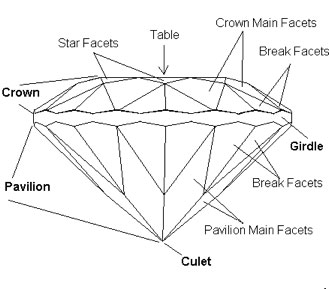
Standard Gemstone Shapes
Rounds and ovals are standard shapes in cabbing. Rounds, squares, and rectangles are standard shapes in faceting.
Fancy Cabochon Shapes
Fancy cab shaped gems are anything other than a round or oval. They include rectangles, squares, crosses, tear drops, and freeform shapes.
Fancy Faceted Shapes
Fancy cab shaped gems are anything other than a round or oval. They include rectangles, squares, crosses, tear drops, and freeform shapes.
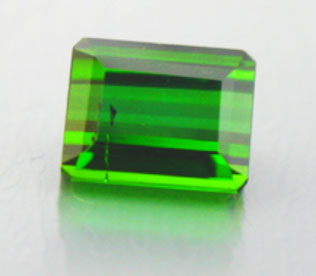
Emerald Cut
A rectangle with the corners trimmed off is called an emerald cut.
“Emerald Cut Green Tourmaline,” 3.92 cts. © All That Glitters. Used with permission.
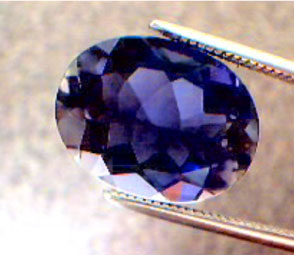
Ovals
Ovals are considered fancy shapes for faceting. They take more work to cut than a round.
“Iolite,” oval cut, Madagascar, 3.46 cts. © All That Glitters. Used with permission.
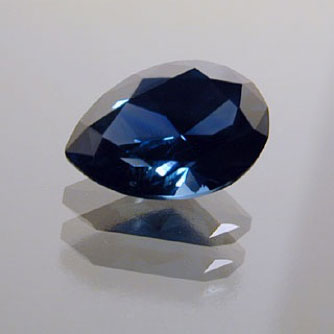
Hearts and Pears
Heart and pear shaped gems are fancy shapes that take even more work than ovals.
“Sapphire,” oval end pear cut, 1.45 cts. © Dan Stair Custom Gemstones. Used with permission.

Marquis Cut
Marquis shapes or navettes are long thin gems with gently curved sides that come to points on the ends.
“Mozambique Tourmaline,” marquis cut, 7.36 cts. © All That Glitters. Used with permission.

Cushion Cut
Cushions are almost square or rectangular. Their sides are gently curved, like the cushions of a couch.
“Sapphire,” fancy radiant cushion baguette cut, 3.26 cts. © Dan Stair Custom Gemstones. Used with permission.
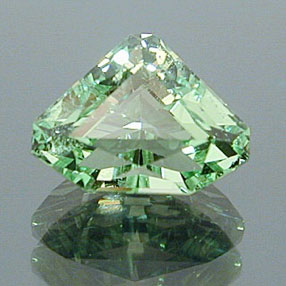
Shield Cut
A shield is symmetrical from side to side, but not top to bottom. They come in a variety of proportions with different numbers of sides.
“Merelani Mint Garnet,” fancy shield shape, Tanzania, 1.54 cts. © Dan Stair Custom Gemstones. Used with permission.
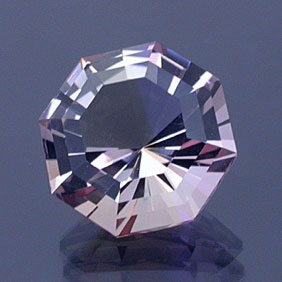
Shield Cut
Other fancy shapes include, rhomboids, parallelograms, triangles, hexagons, and octagons.
“Ametrine,” Barion octagon cut, Bolivia, 4.48cts. © Dan Stair Custom Gemstones. Used with permission.
Faceting Styles
There are two basic styles of faceting: brilliant cuts and step cuts. These styles are often combined. Some cuts combine faceting and cabbing.
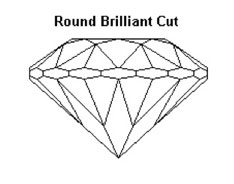
Brilliant Cut
Examine the round brilliant diagram below left. It has triangular and kite shaped facets. This style is called a brilliant cut.
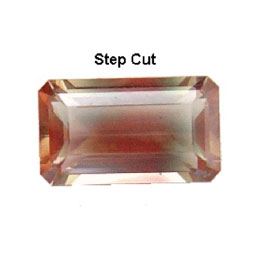
Step Cut
A step cut features rectangular shaped facets neatly arranged, one on top of the other. The emerald cut, a cut-cornered rectangle shape shown below right, is the most common example of a step cut.

Ceylon Cut
The Ceylon cut has a step cut pavilion and a brilliant cut crown. This is an ancient technique still used in Sri Lanka today. Modern computer studies have shown that the reverse, a step cut crown over a brilliant cut pavilion, will often produce the greatest brilliance.
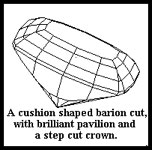
Barion Cut
The Barion cut was developed by South African diamond cutter Basil Watermeyer. Essentially, it places a round brilliant pavilion into a fancy shaped gem. It usually has a step cut crown as well. This usually results in far greater brilliance than other methods. Interestingly, Mr. Watermeyer invented this cut just before the advent of computer ray tracing programs. The round brilliant pavilion, compared to other pavilion shapes, offers greater light discipline inside the gem. Barion cuts display a fountain of light effect that is quite striking!
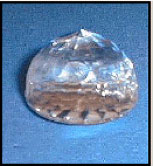
Rose Cut
A gem with a faceted top and a cabbed flat bottom is called a rose cut. Occasionally you’ll see a gem with a faceted pavilion and a domed crown, but this is not a standard method of cutting.
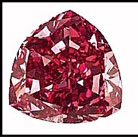
Named Cuts
There are standard, well-recognized cuts like round brilliants and emerald cuts. Most faceted gems are simply called by their shape. However, there are many variations within each shape. A triangular gem can have many or few facets, much or little brilliance and scintillation, etc. And then, there are other traditional, but less common, cuts with distinctive names.

Portuguese Cut
The Portuguese cut has several tiers of facets, which create a wonderful display of light. It has more scintillation than almost any other cut. As you can see from the picture, it requires many facets and requires considerable labor. These factors, in addition to the fact that the rough must have greater than normal depth, make this cut something that is used only occasionally.
“Diaspore,” 5-star Portuguese round, 10.90 cts, faceted by Stephen Kotlowski. © All That Glitters. Used with permission.
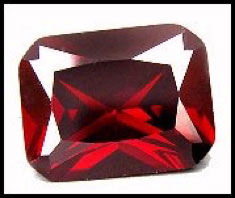
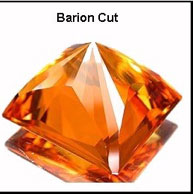

“No Name” And “New Name” Cuts
Some cuts have no name at all. Sometimes, faceters simply use a cut that fits a piece of rough, something that just “works.” The red gem below is a good example of this. It’s a simple cut with a radiant pavilion.
When the GemCad program was released in the 1980s, people were able to test their gem cutting designs on a computer before taking a stone to a lap. This made it easy for people to create new cuts. Today, there are thousands of new designs. Many of these newly named cuts are simply a means to standardize common techniques. For example, someone may “design” the cut used on this red gem and save it with a computer program. They then have an established method for cutting it that can be referenced and used again. What was once a “no name” cut that just worked for one stone can now become a “new name” cut that could work with other stones.
While most newly named cuts are just variations on standard cuts, some are unique. Indeed, there seems to be no end to the imagination of our lapidaries. There’s no limit to shapes or the number and arrangements of facets. Some new cuts are merging a variety of techniques. Below is a Barion cut gem with a parallelogram outline.
Curved Facets
Flat facets are not the only technique available to today’s gem cutters.

Fantasy Cut
A fantasy cut is a popular style of faceting. This technique uses large pavilion facets. Some simple grooves are used, which are mirrored throughout the pavilion. This ametrine is an excellent example of a fantasy cut gem.

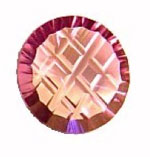

Concave Facets
Hand cutting isn’t the only way to make precise, concave facets. There are now faceting machines that can accomplish this. The gems are first cut traditionally with flat facets. Then, they’re transferred to another machine for an additional set of concave facets. However, the extra labor required for this is so considerable that this technique is unlikely to see widespread use. Nevertheless, as you can see from the picture below, the results are nothing short of spectacular. The brilliance and scintillation exceeds anything that can be done with flat facets alone.
There is no end to what a lapidary can do with gemstones. Keep your eyes open and you’re sure to see cuts that are totally unique.
There are always new designs and unusual shapes for gem cutting.
